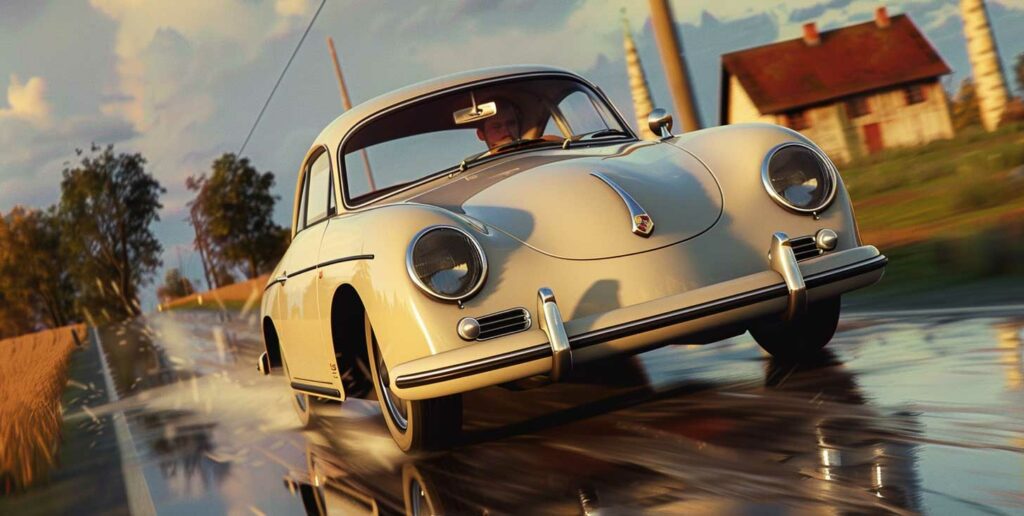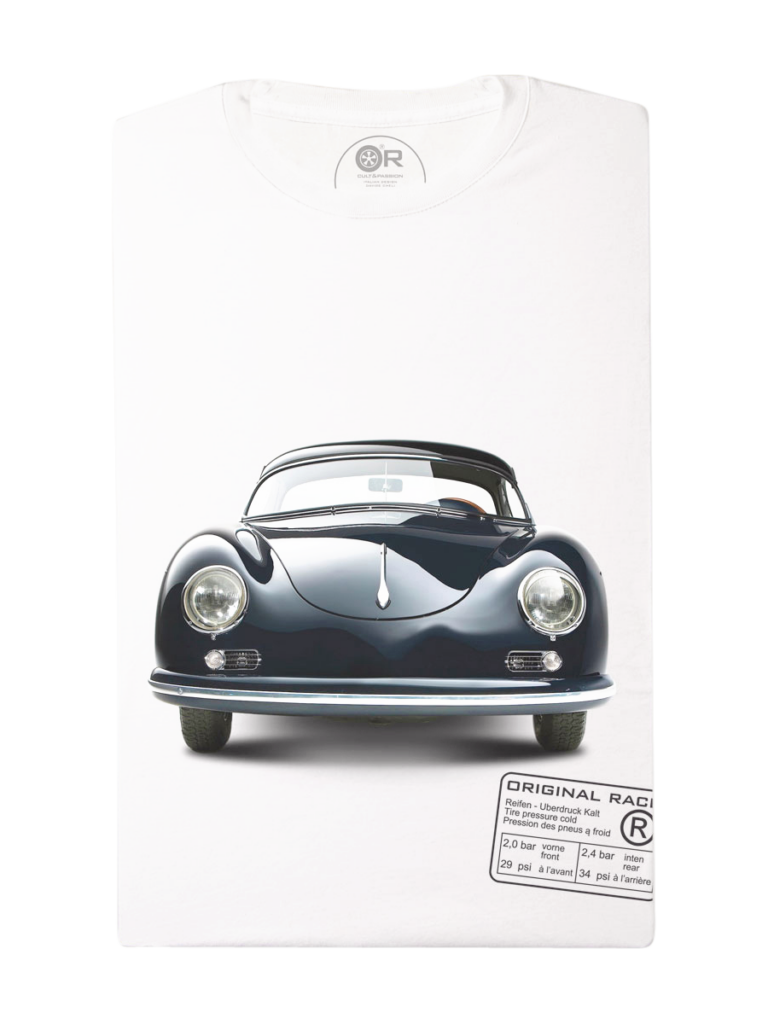In the realm of automotive icons, the Porsche 356 stands as a pioneering symbol of innovation, determination, and the unwavering pursuit of automotive excellence. This seminal sports car not only laid the foundation for the legendary Porsche brand but also captured the hearts and imaginations of enthusiasts worldwide. Join us as we explore the captivating origin story of the Porsche 356, a tale of humble beginnings, engineering ingenuity, and a lasting legacy that continues to inspire generations of car enthusiasts.
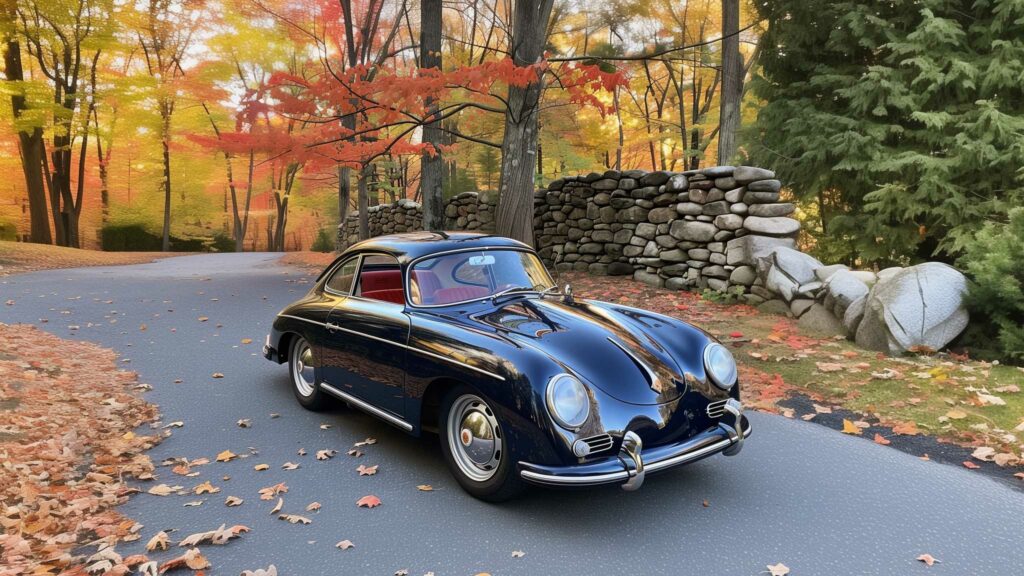
The Humble Beginnings
The birth of the Porsche 356 was marked by humble origins that belied the greatness it would eventually achieve. In the aftermath of World War II, the seeds of this automotive icon were sown in an unlikely setting – a series of buildings that had previously served as a sawmill in the small Austrian town of Gmünd.
Gmünd, Austria: Birthplace of the 356
It was here, in this unassuming location, that Ferdinand Porsche II, son of the renowned automotive engineer, and a small group of dedicated personnel embarked on a journey that would forever change the automotive landscape. Despite the primitive nature of the early cars, even by the standards of postwar European production, the team’s unwavering determination and commitment to excellence shone through, laying the groundwork for the birth of the now-iconic Porsche 356.
Public Unveiling and Reception
On July 4, 1948, the Porsche 356 made its public debut at the Swiss Grand Prix in Bern, instantly capturing the attention of the automotive world. European journalists were quick to praise the car, describing it as “very pleasant to drive, handling as we imagined a modern car should be.” The positive reception at this and subsequent events, such as the Innsbruck races, foreshadowed the 356’s future success and acclaim, setting the stage for its journey to become a true automotive icon.
Evolution and Innovation
From its humble beginnings in Gmünd, the Porsche 356 underwent a remarkable evolution, driven by the relentless pursuit of innovation and a commitment to creating a practical and marketable sports car.
Transition from Prototype to Production
Even before the first production-ready 356 was completed, the team at Porsche was already looking ahead to refine and evolve the design. The early prototypes and pre-production models served as a canvas for innovation, with each iteration bringing the 356 closer to its final, marketable form.

The aluminium bodies of the early 356s were meticulously handcrafted by skilled artisans, with every panel carefully shaped and sculpted by hand to achieve the desired aerodynamic profile. These labour-intensive and time-consuming processes resulted in exceptional bodies that were true works of art, with subtle variations making each early 356 a unique creation. The skilled workers took immense pride in their work, pouring their passion and expertise into every aspect of the car, from the bodywork to the meticulous hand-assembly of every component and system.
Over the course of two years, Porsche produced approximately 50 examples of these early handcrafted 356s, including eight cabriolets. These rare and coveted examples are now highly sought after by collectors and enthusiasts alike, representing not just the birth of an automotive icon but also a testament to the artistry and craftsmanship that defined the early days of Porsche’s production.
Racing Heritage
The Porsche 356’s legacy is inextricably linked to its impressive racing heritage. From its early days, the 356 demonstrated its performance capabilities and endurance on the racetrack, participating in prestigious events such as the Mille Miglia and the Le Mans 24 Hours. These motorsport successes not only solidified the 356’s reputation as a high-performance sports car but also contributed to the development of subsequent Porsche models, including the iconic 911, ensuring that the brand’s racing pedigree remained an integral part of its DNA.
Cultural Impact
Beyond its technical achievements, the Porsche 356 left an indelible mark on automotive culture, fostering a sense of community and camaraderie among enthusiasts that endures to this day.
Porsche 356 Enthusiast Community
One of the most enduring traditions associated with the Porsche 356 is the act of flashing lights when encountering another 356 on the road. This simple gesture, which originated over 75 years ago, has become a symbol of the camaraderie and shared passion that unite Porsche enthusiasts worldwide. It serves as a testament to the enduring appeal of the 356 and the strong emotional connections it has forged among its devoted following.
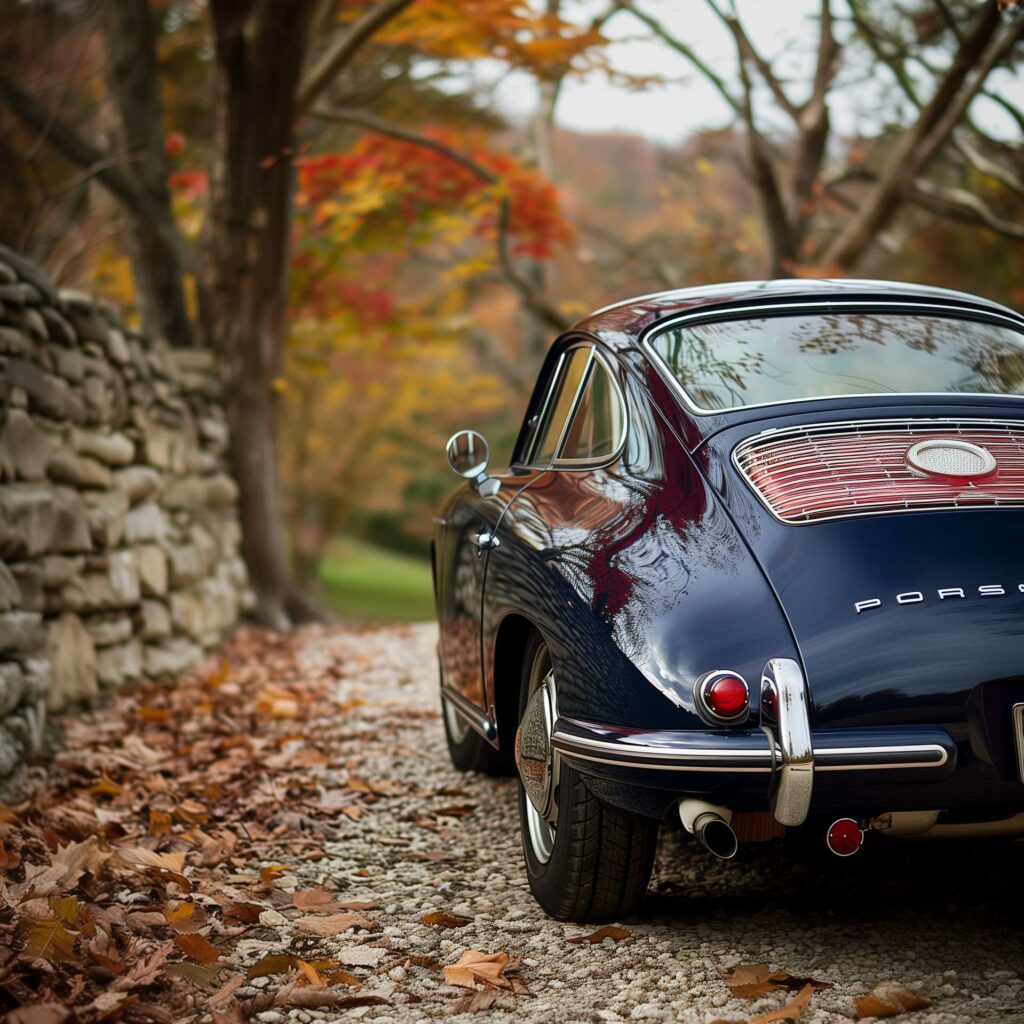
Influence on Automotive Culture
The Porsche 356’s influence on automotive culture extends far beyond its enthusiast community. The car’s distinctive design, performance, and engineering excellence have cemented its status as a cultural icon, inspiring generations of automotive enthusiasts and shaping the very fabric of car culture. Its enduring appeal and the traditions surrounding it have transcended mere transportation, becoming an integral part of the automotive zeitgeist and a symbol of the enduring allure of the sports car.
Technological Advancements
Throughout its production life, the Porsche 356 underwent a series of technological advancements and refinements, ensuring that it remained at the forefront of automotive engineering and driver satisfaction.
Evolution and Refinement
The introduction of disc brakes, cockpit improvements, and the incorporation of more powerful engine variants were just a few of the many enhancements that marked the 356’s evolution. These advancements not only improved the driving experience but also demonstrated Porsche’s commitment to continuous innovation and refinement, ensuring that the 356 remained a benchmark for sports car excellence throughout its production run.
Global Market Impact
The success of the Porsche 356 extended far beyond its European origins, with the car making a significant impact on the global automotive market. One pivotal figure in this global expansion was Max Hoffman, a prominent car importer who played a crucial role in introducing the Porsche 356 to the American market. Hoffman’s foresight and belief in the car’s potential led to a substantial increase in sales, solidifying the 356’s place in the hearts and garages of enthusiasts across the Atlantic.
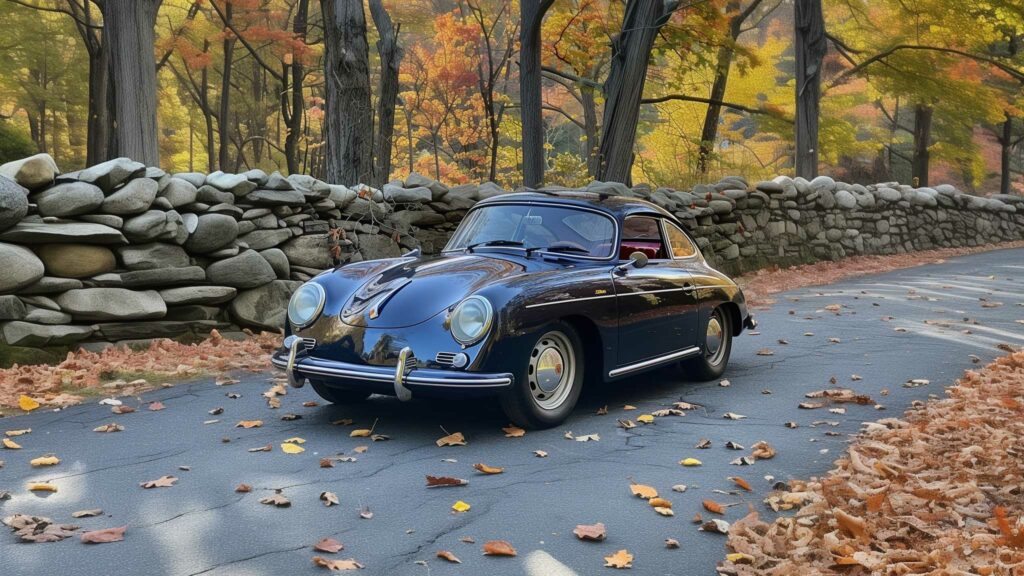
End of an Era
As with all great stories, the Porsche 356’s journey eventually came to an end, marking the transition to a new era in the brand’s history.
Transition to the Porsche 911
The introduction of the new Porsche 911, with its powerful six-cylinder engine, signaled the dawn of a new era for the brand. As the curtain fell on the 356’s production, with the cessation of body production by renowned coachbuilders Karmann and Reutter, the 356 had cemented its legacy as the cornerstone of Porsche’s success, paving the way for the future generations of iconic sports cars that would follow in its footsteps.
Paving the Way for the Future
While the Porsche 356 may have bid farewell to the production line, its impact on the automotive world remains indelible. The lessons learned from its development, the engineering innovations it introduced, and the unwavering spirit of its creators have become an integral part of Porsche’s DNA, shaping the brand’s future and inspiring generations of automotive engineers and enthusiasts alike.
Conclusion
The Porsche 356 is more than just a car; it is a testament to the power of vision, determination, and the relentless pursuit of excellence. From its humble beginnings in a repurposed sawmill to its meteoric rise as an automotive icon, the 356 has left an indelible mark on the automotive landscape. Its pioneering spirit, groundbreaking engineering, and enduring cultural impact have cemented its place as a true legend, inspiring generations of car enthusiasts and shaping the very fabric of automotive culture. As we look to the future, the legacy of the Porsche 356 will continue to serve as a guiding light, reminding us of the limitless possibilities that can be achieved when ingenuity, passion, and a relentless drive for perfection converge.
FAQs
Why is the Porsche 356 considered a pioneering sports car?
The Porsche 356 is considered a pioneering sports car for several reasons. Firstly, it laid the foundation for the legendary Porsche brand, introducing innovative design concepts and engineering solutions that would shape the future of the company. Additionally, the 356 was one of the first production cars to feature a rear-mounted engine, which would become a signature of Porsche’s sports car designs. Its lightweight construction and aerodynamic body style also set new standards for sports car performance and handling.
What is the significance of the Porsche 356’s racing heritage?
The Porsche 356’s racing heritage is significant because it solidified the car’s reputation as a high-performance sports car and contributed to the development of subsequent Porsche models, including the iconic 911. The 356’s success in prestigious motorsport events like the Mille Miglia and Le Mans 24 Hours demonstrated its capabilities and endurance, while also showcasing Porsche’s commitment to performance and racing pedigree.
How did the Porsche 356 influence automotive culture?
The Porsche 356 left an indelible mark on automotive culture in several ways. Its distinctive design, performance, and engineering excellence cemented its status as a cultural icon, inspiring generations of automotive enthusiasts and shaping the very fabric of car culture. Additionally, the traditions and camaraderie associated with the 356, such as the act of flashing lights when encountering another 356 on the road, fostered a strong sense of community among Porsche enthusiasts that endures to this day.



